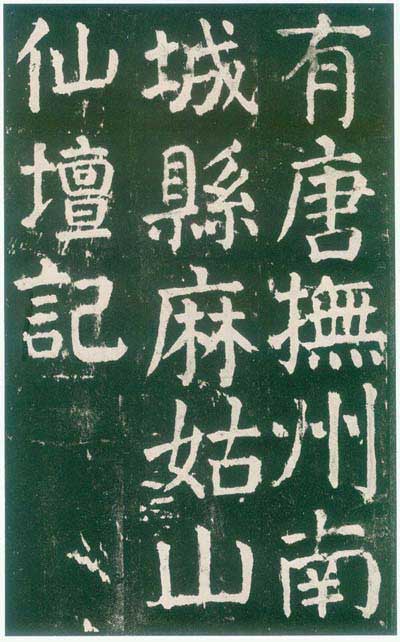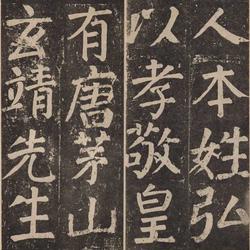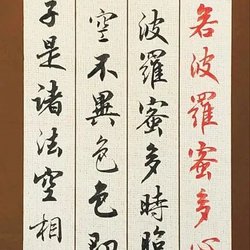

Dai Xi's postscript (large character version) collected by the Shanghai Museum
Yan Zhenqing wrote in April of the sixth year of the Dali calendar (771), when he was sixty-three years old. rubbings. Regular script, one article. The full name is "The Immortal Altar of Magu Mountain in Nancheng County, Fuzhou, Tang Dynasty". It is an important work of Yan Zhenqing in his later years.
In the sixth year of Dali (771), Yan Zhenqing was appointed as the governor of Fuzhou. At a time when his official career was frustrated, he had the intention to inquire about Zen. In April of that year, he visited Magu Mountain in Nancheng County and wrote an article about Magu's enlightenment and immortality, which reflected his mood at this time.
According to Zhang Yansheng's "Records of Rare Books on Tablets and Calligraphy", the rubbings used are horizontally engraved calligraphy copies, and the original ink-marked woodblock copies were found in the Song Dynasty. The inscription was originally located on the top of the mountain twenty-two miles southwest of Nancheng County, Jianchang Prefecture, Jiangxi Province. Today, no original tablet rubbings have been handed down. It is said that there are three versions of this calligraphy: large, medium and small. Since the original stones have all been lost, it is difficult to find a good version. According to records, there are several types of engraved calligraphy manuscripts in the Song Dynasty, including those collected by Zhang Zhidong, He Zizhen, Duan Fang, and Luo Zhenyu, as well as postscripts by Dai Xi and Zhao Ziqian. This shows the complexity of the handwriting situation at this time.
The modern scholar Ma Ziyun's "Appraisal of Stele Inscriptions" states: I heard that He Shaoji (Zizhen) collected the Song rubbings, and later Yan Yunbo collected them. Now I don't know who kept them. It is also said that the original stone was destroyed by thunder and fire, and was rebuilt by Liang Boda, the prefect of Jianchang in the Yuan Dynasty. However, Yuan engraved copies are rare today. Later, there were Tang Yan Yun's edition, Zhongyi Tang's He's edition, and Huang's edition, but the Tang's edition was the best and the He's edition was the worst. "Essays on the School Stele" says: The Shanghai original stone lithograph was collected by Luo Zhenyu, and contains Zhang Tingji's postscript. It is unknown where it is now.
A reprint of Ming rubbings from the National Palace Museum in Taipei (large-character edition)
Note: According to Wang Chang's "Inscriptions and Stone Collection", it is recorded in the postscript of King Yi of the Ming Dynasty who re-engraved the stele. He visited the Song Dynasty extensively and ordered good workers to carve it carefully. It is said that the so-called Song Dynasty painters were actually re-engraved by the Ming Dynasty. This volume The Ming rubbings in the collection of the National Palace Museum were originally collected by the Dong family of Nanpi Zhang. They later belonged to Zhu Yi'an and are now in the collection of the National Palace Museum in Taipei.
Right-click to download page by page and unzip the password: 9610.com (from Shanghai Painting and Calligraphy Publishing House's "Classics of Ancient Inscriptions - Yan Zhenqing's Regular Script Magu Immortal Altar")
Large print, rubbings. The word diameter is about 5 centimeters. There are two rare copies in existence: one is a reprinted version by Zhu Hubin, King Yiwang of the Ming Dynasty, with strict calligraphy (see above, stored in the National Palace Museum in Taipei); the other is a photocopy of Dai Xi's postscript of the Qing Dynasty (see above) , collected by the Shanghai Museum), the stippling is clear and rarely diffuse.




















